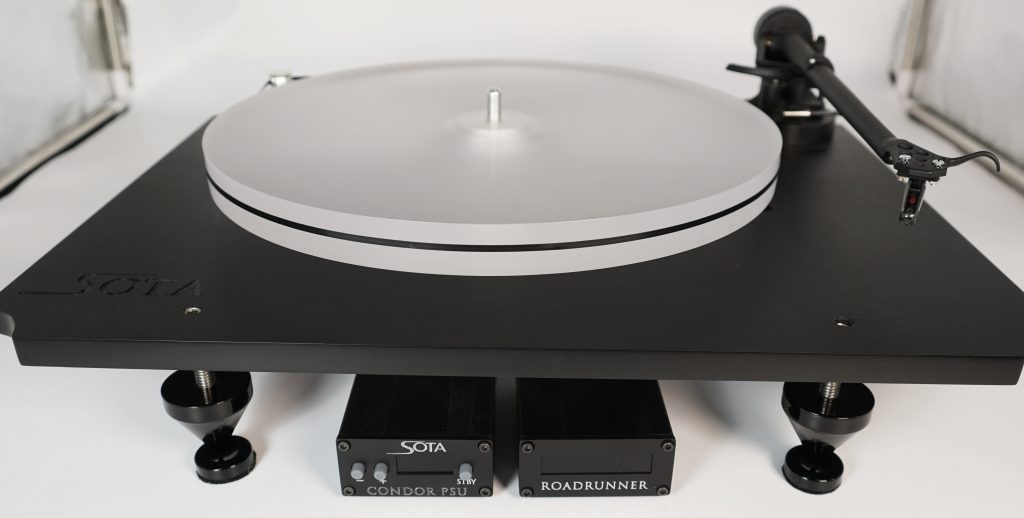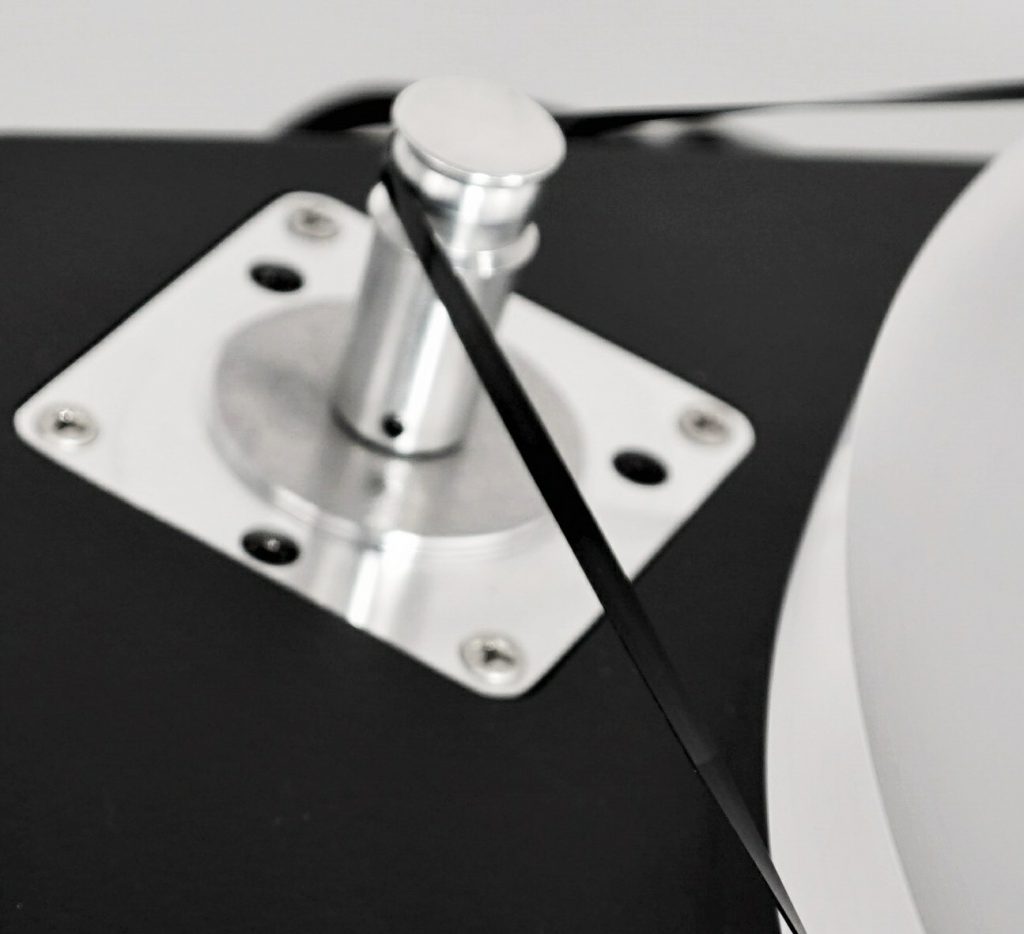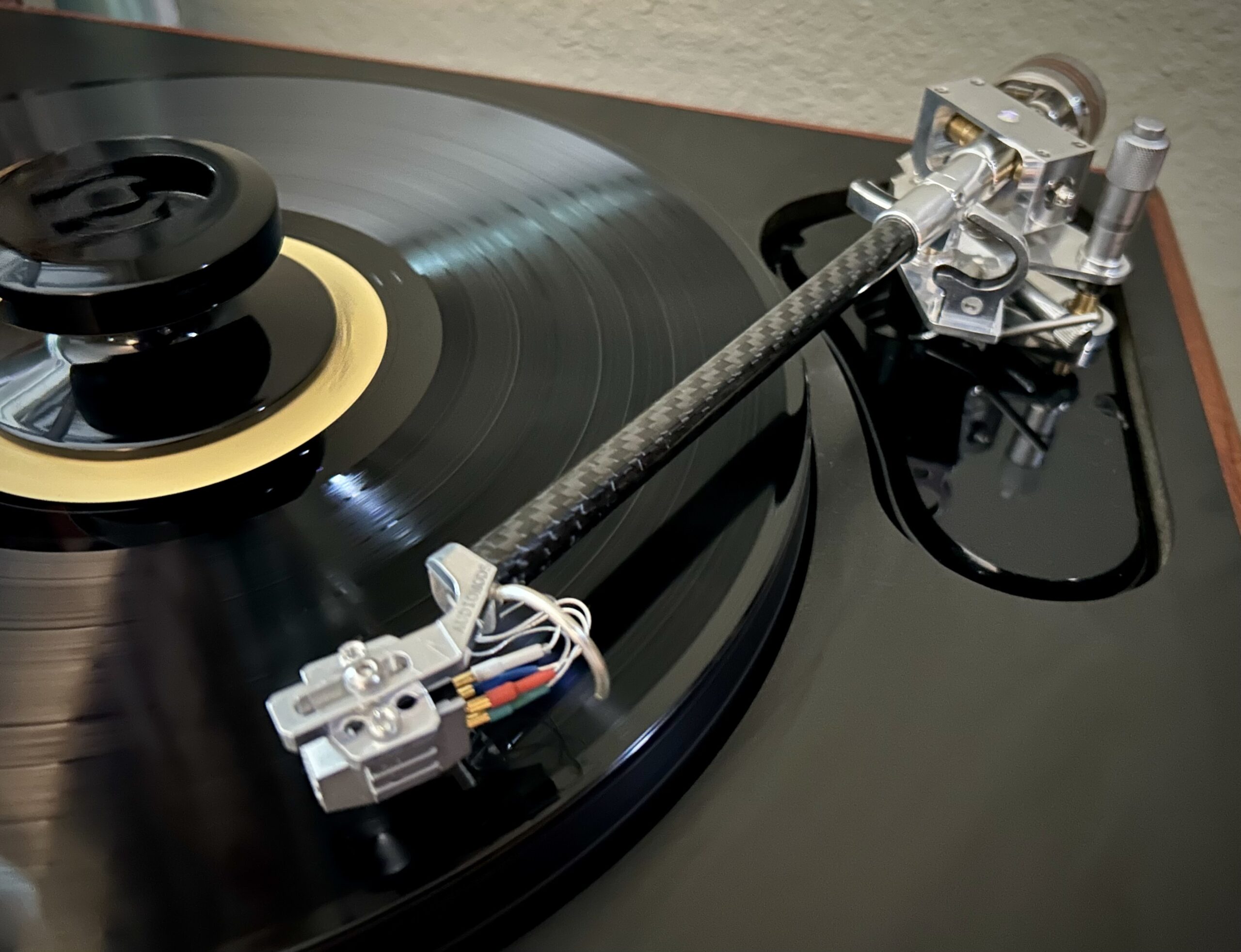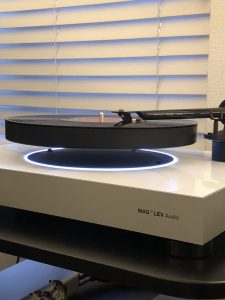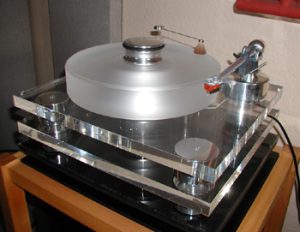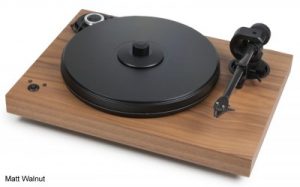Within the audio hobby, there is an imaginary divide between companies that produce high-end components and others that create products meant to fill consumer demand at a price point. This demarcation line can be difficult to cross over, as companies may not possess the skills, focus, or resources needed to develop products that appeal to a different set of demographics. This has been attempted quite often, with companies focused on affordable components attempting to expand their market by creating offerings that are hailed as "giant killers." On the other hand, upper-tier companies established in the high-end niche roll out new designs that feature a trickle-down implementation of their proprietary technology and circuits. Both types of audio companies can have varying degrees of success in this endeavor. It is, however, a tricky road to navigate, and success is not guaranteed.
High-end turntable manufacturers have a stiff challenge when expanding their product line to the lower price points, as their core offerings usually rely on superior materials and precise machining and finishing techniques. These attributes do not come cheap, which means these companies must find alternate ways to design and assemble their more affordable components, and yet maintain a level of quality that is in line with their established reputation in the marketplace.
This is the perfect place to mention the newly released SOTA Sound Innovations Escape turntable, which is causing quite a stir with hobbyists who are looking for excellent analog playback without having to raid the kid's college fund to accomplish this. In Delevan, Wisconsin Donna Bodinet and Christan Griego are rallying the troops at SOTA to produce an exciting lineup of tables. Christan has been on a roll with innovative updates to iconic tables that currently exist in their product lineup. The Escape was released at the end of 2019 and is being enthusiastically received by audiophiles throughout the US and Europe. Donna Bodinet, who is the matriarch of SOTA and current belle of the Midwest, was kind enough to send out a review sample of the Escape fitted with the Rega RB220 tone arm and Ortofon OM5e cartridge. The arm and table sell for $1550 plus whatever cartridge you choose to pair with it.
This price point resides in an ultra-competitive niche, and there are many turntables that come in under the $2000 mark; however, very few of them can make a splash at this price point. What makes the Escape special is the single-minded determination that Christan exerts to get the final ounce of sound quality out of this table. As mentioned in the Cosmos Escape review in Issue 107 of Positive Feedback (HERE), Christan is a talented designer of musical instruments, and his skills in the areas of materials science allow for a deft touch when bringing together individual elements for a turntable design. A studied examination of the materials chosen for the platter bearing assembly would confirm this. Yet every subcomponent of the Escape is critically evaluated. Another example of this is the slab of phenolic resin that Christan chooses for the plinth. Phenolic resin is not unique to the Escape in SOTA's product lineup, nor is it a cheap material that meets minimum requirements to come under an arbitrary price point, but rather it is the same material that you find in the sub-chassis of Sapphire and Nova turntables. This material excels at minimizing the effects of unwanted energy from the motor migrating to the platter bearing and tonearm. Sure, the matte finish of the resin imparts a somewhat industrial aura to the table, but do not rush to a hasty judgement, as this slab of material makes a significant contribution to the uncolored presentation that Christan is working towards.
The foundational components of a quality belt-drive turntable are the motor, the bearing assembly, and finally the platter. The motor in the Escape is the same unit that is fitted in the Cosmos Escape, which happens to be an $9700 turntable! The 3-phase asynchronous DC motor is controlled by a Phoenix Engineering Condor motor controller. The Condor ensures accurate control and allows for convenient speed selection. In other words, there is none of this nonsense of manually moving the belt over to a different pulley on the motor. Additionally, owners can opt to purchase the Roadrunner, which allows for a sensor to be attached under the platter and establish a feedback loop to remove any lingering vestiges of speed variation. The digital read out of the Roadrunner confirms the final speed measurement, and the system can perform several other tasks such as keeping track of elapsed play time, which would allow an owner to keep track of hours that a cartridge has been in service. The reality is with the Escape you get a high-performance motor and control system that results in a level of speed stability that surpasses many other tables within this price range.
The bearing assembly used on the Escape is the hidden gem of this table, and I do literally mean gem, as the thrust plate of this table is a sapphire disc. Yes, the same material that established SOTA's legacy, and is used in the current Heritage series of tables. The Escape bearing architecture uses a more conventional layout with the sapphire thrust plate is located at the bottom of the platter spindle well, while the upper tier tables have an inverted bearing design. In the Escape a captive ball bearing is on the bottom of spindle shaft and rides on top of the sapphire thrust plate. The bearing cup is machined from Alloy 360 brass which is highly valued for its ability to be used in precision machining applications that require tight tolerances. The spindle shaft is made from stainless steel, and bonze bushings keep all the bits and pieces in proper alignment. The platter bearing and motor assembly exist in a symbiotic relationship, as neither element can reach its full potential without the assistance of the other. Both components must work in harmony with each other to create stable rotational speed, and do it so unobtrusively that the process does not interfere with the quietest signals that the phono cartridge is retrieving from the record. Spend an evening or two with the Escape and it becomes evident that Christan and SOTA have successfully married this combination of motor and platter bearing.
Acrylic has an established track record of being used as a material for high quality turntable patters. The machining and finishing process of acrylic requires skill and precision to achieve the desired results of a high mass and a precision fit to the spindle portion of the platter bearing. Acrylic is also inert, and issues with ringing or unwanted resonances become a non-factor. The standard platter is 1 inch thick and weighs just under 4 pounds. There is an upgrade available for the table also, as you can order a 1.5-inch-thick platter for $100, and you gain two pounds of mass. The review sample came with both platter options although most of the listening was done with the 1-inch platter which is representative of what a large percentage of customers would be purchasing.
The Escape turntable comes fitted with the Rega RB 220 arm, which can be considered one of those hard choices that a company has to make when designing a table to a price point. This is a fine arm for a modest price, and to improve upon it will undoubtedly require spending a bit of money. There is a reason why Rega arms have become the OEM choice for many turntables, as the company has years of experience refining this design, along with economies of scale in tone arm manufacturing that most other audio companies cannot equal. So, the choice of the RB220 on the base version of the Escape is a prudent one. However, the owner of this table is not locked into this arm, and SOTA is willing to configure your table to whatever arm you want to have installed. As an example, there have been tables set up with Audiomods and Origin Live arms. During my listening sessions I transplanted my Audiomods Series 6 arm onto the Escape and installed a ZYX 4D moving coil to see what was possible. While this combination is not what a typical Escape owner would be ordering, I can report that this table was able to competently support this level of arm and cartridge.
The A pair of JBL 4365 studio monitors anchor my current system and are driven by a pair of AVM Audio Essential Monoblock amplifiers. Upstream components are an Esoteric Audio E-03 phono stage and Halcro DM8 preamplifier. VH Audio Spectrum CU interconnects and Wireworld Escape 8 speaker wire connect these components. The TLP Audio TF130 power conditioner and PI Audio Group power cords route clean AC to the system. The Escape turntable went through 50 hours of casual use to break-in the motor, platter bearing, and tone arm wiring before any critical listening was started.
A well-designed turntable must achieve precise speed control along with a low noise floor to meet the primary criteria that defines a high-performance vinyl playback. Christan realizes both objectives in the Escape by using a high-quality motor and precision control circuit in conjunction with an outstanding bearing assembly. The composition "Night" by George Winston (December; Windham Hill WH-1025) highlights the superb speed control of this table, as the combination of sustained chords being overlaid by the complex melody of the song showcases the precise control this table possesses. In certain passages within this song those chords have a magical beauty as they slowly decay in the blackness of silence, which the Escape allows to float out into the room. From the user's vantage point, the Condor speed controller is exactly what a person would want, as it allows for accurate speed regulation, convenient selection between 33.3 and 45 RPM, and for minute speed adjustments if required. If a person decides to splurge a bit and acquire the Roadrunner, the feedback loop achieves a higher level of speed accuracy. I spent a bit of time working with the settings on the Roadrunner and can saw the other associated benefits, such as the elapsed timer are quite useful and appreciated.
SOTA also sent along the upgraded platter for the Escape, and I did have a chance to make comparisons against the standard one. There are incremental improvements in a lowered noise floor which manifest in a higher degree of focus to instruments and vocalists. Dynamic contrasts within the music occur with more force, providing a higher degree of realism. These are the primary gains I notice, and while you would wager that speed stability would improve, this was one aspect that eluded me. I believe the speed regulation is extremely accurate in the base configuration, as the Condor motor controller effectively executes its assigned duties. When revisiting "Night" with the 1.5-inch platter in place, I find that piano chords are more forceful, the decay of notes trail a bit longer, and the size of the piano is slightly larger. From what I experience I believe the incremental cost of $100 is worth investing, provided your audio system is properly configured. If there are other limitations within the system, perhaps it is best to allocate that C-note towards another component.
At first glance the use of a Rega RB 220 arm and Ortofon OM 5e cartridge feels like a safe but uninspired pairing. Honestly, those thoughts did go through my head, but they were immediately banished after I finished spinning my first record side. This is a synergistic pairing, and I have never heard the Ortofon OM series of cartridges sound this wonderful. I am thoroughly smitten with the quality of sound this combination provides. In the past I have always found the OM series of cartridges to be tonally cool, and somewhat mechanical in terms of how music is portrayed. Over the holidays I bought Vanessa Fernandez album Use Me (Use Me; Groove Note GRV 1050-45-1S) which is released as a 45 RPM One Step pressing on the Groove Note label. I decided to give this reference grade record a spin on the Escape. What I noticed is that vocals are robust and solid sounding, which is not what I expected from this cartridge. The electric bass and kick drum passages on the title track are taut, soulful, and dripping in funky energy. Overall, the music sound alive in a way that is not typically associated with an affordable tone arms and modestly priced cartridges. Yet the natural flow of music that is the hallmark of a well-executed moving magnet cartridge is retained, and perhaps even spotlighted with the Escape. SOTA should be commended on how they have nailed this combination of table, arm, and cartridge. I can enjoy this table just as it sits, and I was reticent when it came time to install the Audiomods arm and ZYX cartridge as I appreciated the Escape just as it is configured.
After a bit of time, I did remove the Rega tonearm and place the Audiomods Series 6 arm in its place. While the arm and cartridge cost approximately 5 times more than the Escape table did, the pairing shows the capabilities of this table in that it can properly support a significantly higher grade of arm and cartridge. On "Sally" by Sade (Diamond Life; CBS FR39581) I found the level of detail and refinement took a quantum leap forward with the inclusion of the Audiomods arm and the ZYX 4D cartridge. The size of the soundstage increased in every direction, the fine detail of instruments and vocals became more apparent, and the dynamic contrasts gained expressiveness. Certainly, the infusion of higher quality and more expensive pieces should result in an improvement of sound quality, it also shows that owners have an upgrade path of the Escape if they choose to venture into the mists of high-end analog netherworld.
Every unsuspended turntable is going to be influenced by its environment, and in this regard the Escape is no different. Perspective owners of this table should thoughtfully evaluate where this turntable gets placed, since it can be influenced by external forces. As an example, some hobbyists will put an unsuspended turntable on a wall shelf, while in my case, I achieved excellent results by placing a 1.5-inch maple slab on four Vibrapods as a turntable isolation platform. On the 2020 Bernie Grundman remaster of Prince's Sign O' The Times (Sign O' The Times; NPG Records R1 2577), I experienced an increase of clarity, an improvement of dynamic contrasts, and tighter and more colorful bass lines. Without the isolation bass, the music had a slightly disjointed and confused presentation, and while the differences may not have been stark, well, they certainly were apparent. My experiences suggest that the Escape turntable will benefit from an isolation base. Of course, the range of solutions can run from modest in cost to insanely expensive, and it is up to the owner to evaluate the range of options available and balance the cost versus benefit ratio. Ultimately, the Escape is a wonderfully responsive table, and if you invest care into the set up and placement of the table it will reward you with an exquisite music presentation of music.
These days it is no secret that a vinyl revival is in full swing. This is great time for audio manufacturers focused on analog reproduction, and there are companies across the world that are flourishing. SOTA Sound Innovations is certainly a resurgent company that is flourishing in this renaissance, and the latest designs that Christan Griego has brought to market are being recognized for their superb design and execution. Christan has brought refinements to a large portion of the SOTA lineup, notably the Sapphire, Nova, Cosmos Escape, and Millennia Escape.
The Escape turntable is an original design that brings a fresh perspective to what is possible in the mid-tier turntable niche. The foundational components of the Escape are the 3-phase asynchronous DC motor that is regulated by the Condor motor controller. This exceptional motor is paired with a sophisticated platter bearing assembly that Christan designed using carefully selected materials such as Alloy 360 Brass, stainless steel, and a thrust plate composed of sapphire gemstone. The phenolic resin plinth is a stiff and non-resonant support and excels at the quick dissipation of energy. The standard package of the Escape pairs a Rega RB220 tone arm and the Ortofon OM5e cartridge, and this combination genuinely surprised me with its overall sound quality.
Yes, there are other choices for arms on this table, and a perspective owner can order the table with sans arm, or have it prepped for a tonearm of their choice. My listening sessions with an Audiomods Series 6 tonearm confirm the Escape to be a versatile table, and I suspect a person could pair it with arms from Origin Live, Audio Origami, or Glanz Audio if they want to raise the ceiling of their vinyl playback system.
SOTA as a company has a long and storied history in the audio world, and Donna and Christan have successfully written a new chapter to the chronology of the company with their execution of fresh engineering solutions and how they have executed them in their current product lineup. This new table embodies all that SOTA has been striving for. The Escape blazes a trail in the affordable turntable market segment. While this is not the cheapest turntable available, it is one that offers uncommon value and performance relative to its selling price. If you want a quality analog package, I suggest giving the Escape careful consideration, for it is an outstanding turntable.
Escape Turntable
Retail: $1550 with the Rega RB220 tone arm
SOTA Sound Inventions
1436 Mound Rd.
Delavan, WI 53115
608.538.3500




